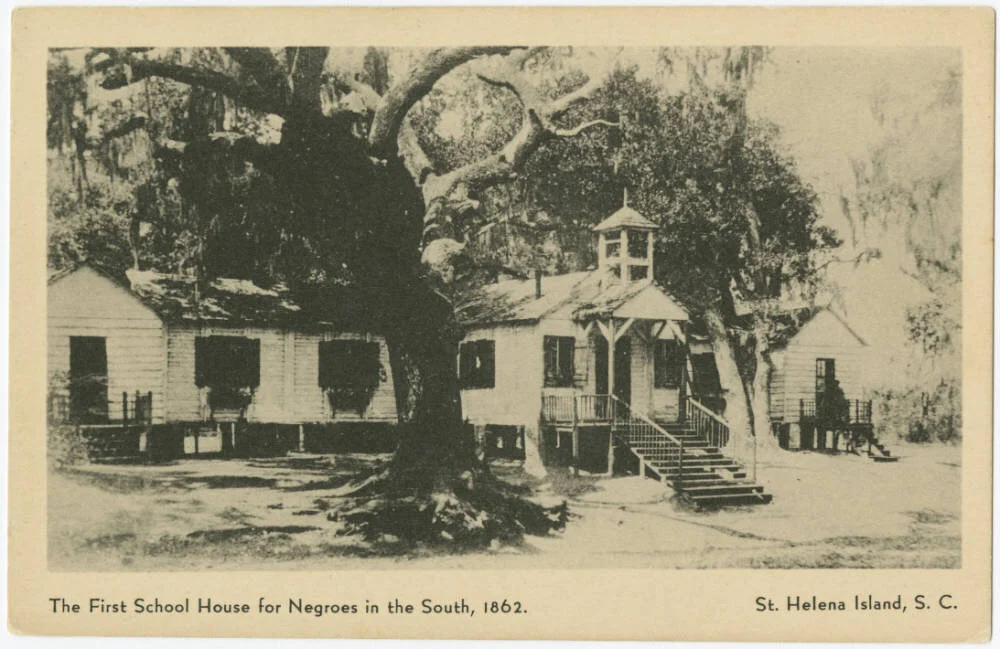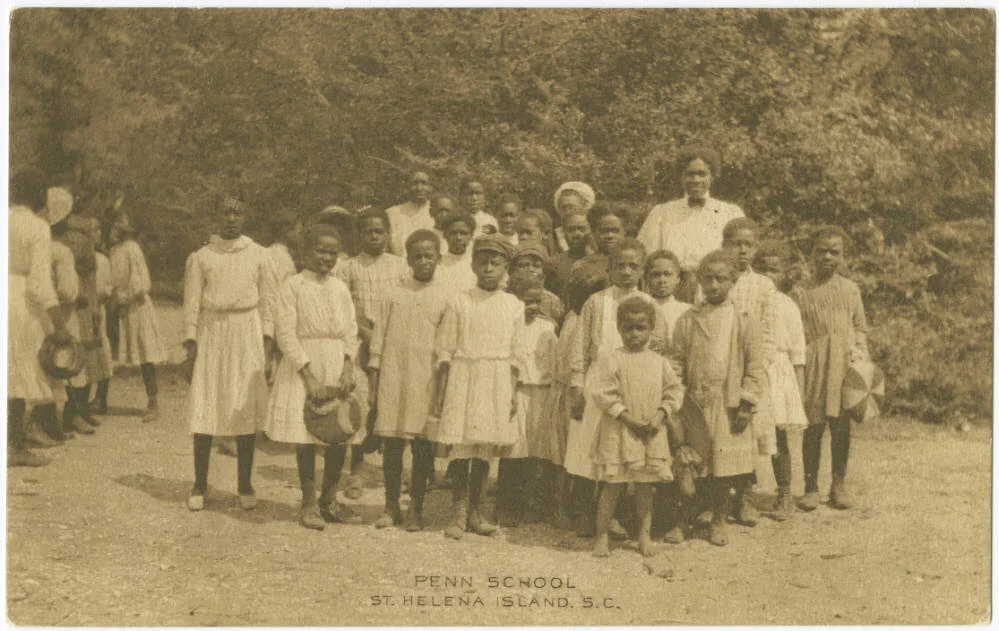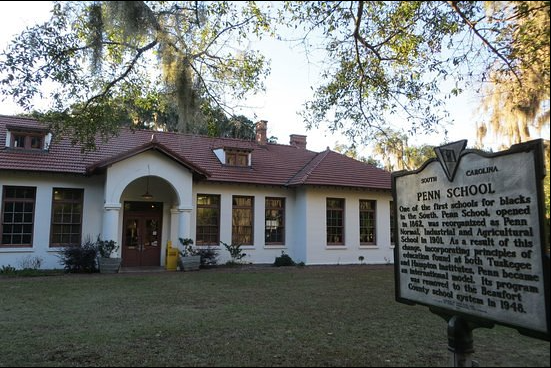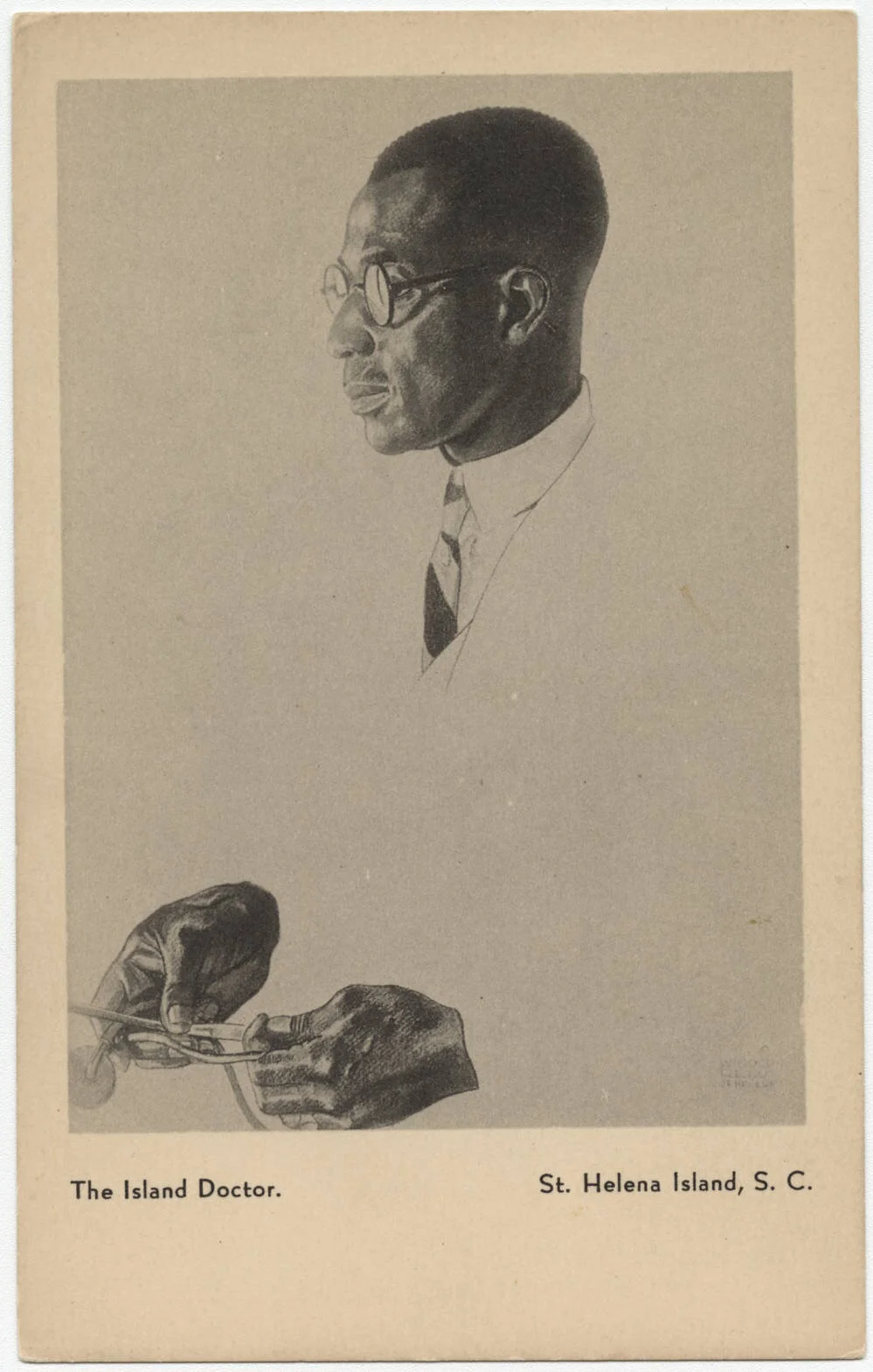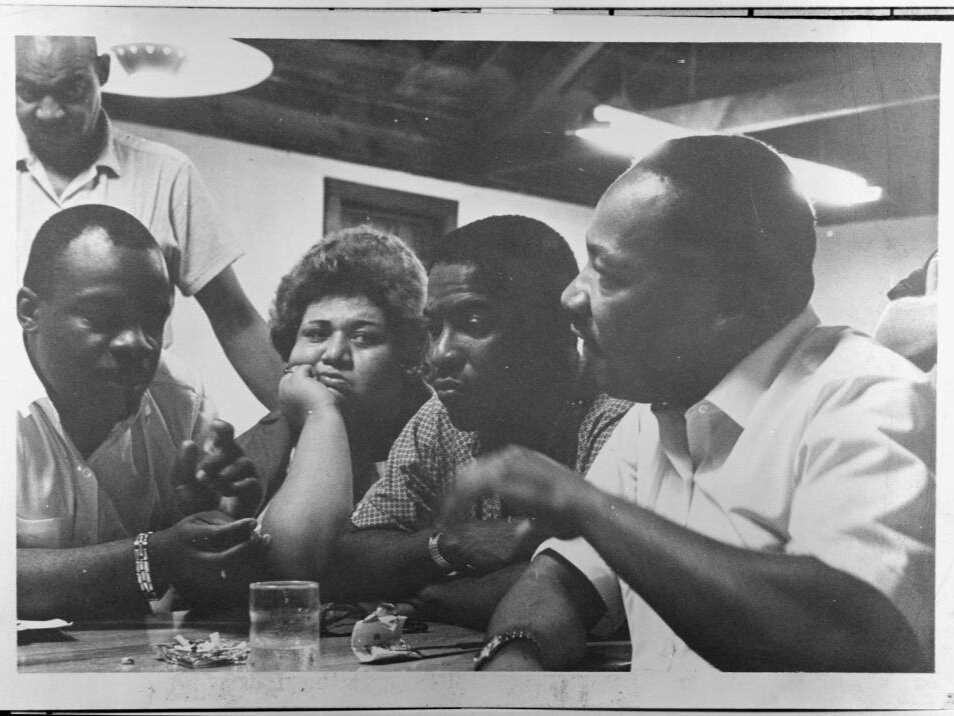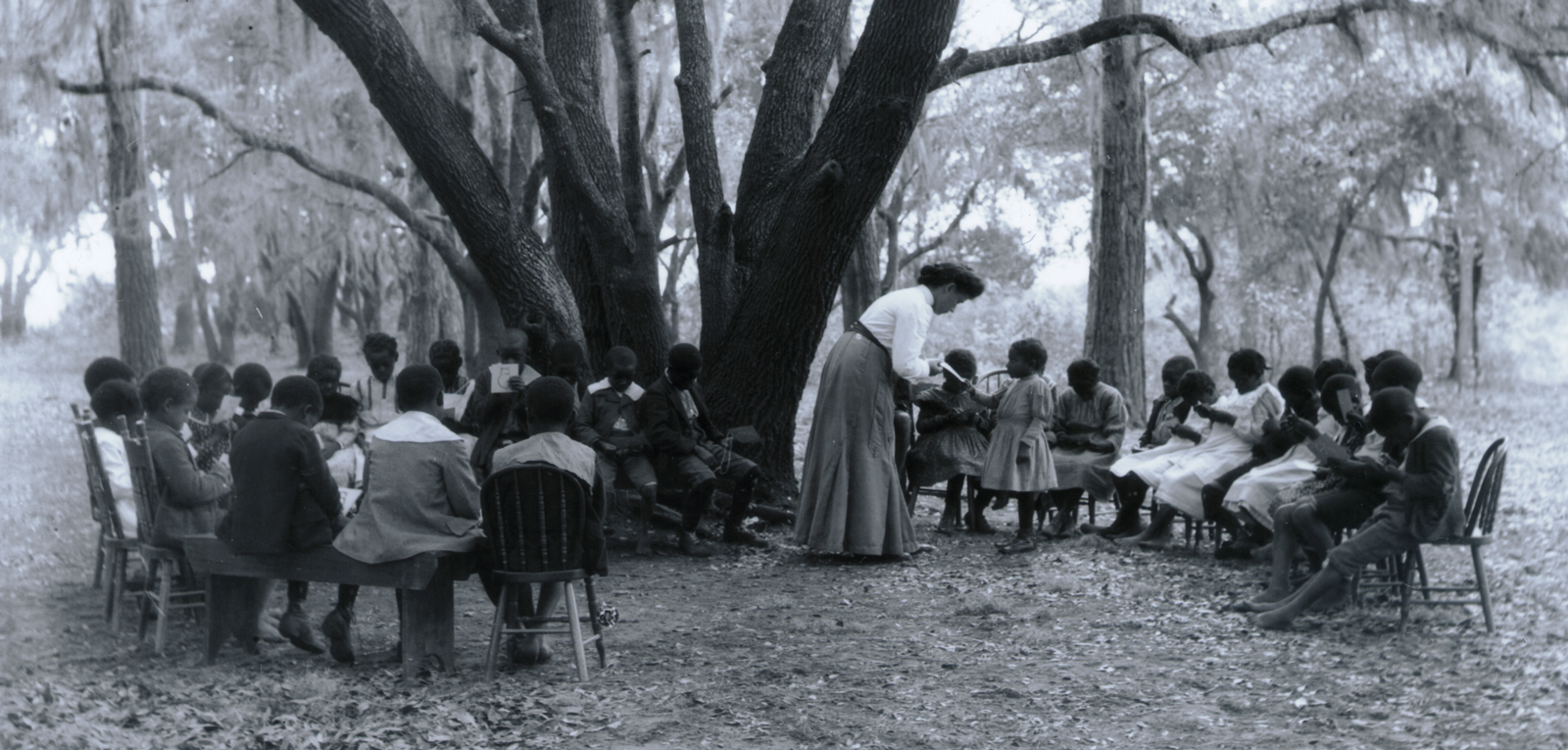
History
Timeline of Penn Center History
Educational Resources
Penn Center extends its exhibition and educational resources through its Historical and Cultural Presentations, Penn School Guided Walking Tour and Self-Guided Tours. Hastings Gantt Resource Guide
A Brief History of St. Helena Island
St. Helena is about 64 square miles of low-lying, mainly rural terrain, with a population under 10,000 people (as of 2010). St. Helena is sheltered from the Atlantic Ocean by the sea islands Hunting, Pritchards, and Fripp, and bordered by St. Helena Sound to its north and Port Royal Sound to the south.
First occupied by subtribes of the Cusabo Indians, St. Helena Island got its current name from the first Europeans who landed there, around 1520: Santa Elena. The Spanish at first captured Native Americans for slave labor on Caribbean sugar plantations. By the mid- to late 1500s, the Spanish occupied the area, struggling with their rival, the French, over Santa Elena and other settlements (such as what is now St. Augustine, Florida). But by 1700, another colonial power, the English, had taken control of the island as part of its colony of Carolina.
The British, and later American, occupiers of St. Helena used the labor of enslaved Africans and Native Americans to build and work large agricultural holdings that produced rice and other crops. Due to the isolation of the Sea Islands, and the presence of relatively few landholders, these workers developed their own creole culture and language unique to the region: Gullah.
In 1860, South Carolina became the first state (of eleven) to declare itself independent from the United States, launching the U.S. Civil War. The first shots were fired on nearby Fort Sumter in April 1861. South Carolina was an immediate target of the Union’s armed forces. The Sea Islands, including St. Helena, were occupied by Union forces early in that long conflict.
Because of that occupation, as early as November 1861, the coastal areas of South Carolina became home to an experiment in how to reorganize a society and economy built on enslaved labor, into a free one. By mid-1862, the Port Royal Experiment established schools and hospitals, and enabled freed people to buy former plantation land at low prices. African Americans in the Sea Islands kept the land productive and built their own financial independence, far earlier than anywhere else in the country—and before the more restrictive Reconstruction policies took hold.
The Penn School was one shining example of that experiment. Today, the Penn Center tells that story, and much more.
Oral Histories
Over the years Penn Center has collected critical oral histories from community leaders and members. In 2019, Penn Center was awarded $50,000 for an oral history project to collect 30 civil rights histories of key civil rights workers who were with Martin Luther King Jr. at Penn Center between 1963-1967. Learn more.
Our Archives
An integral part of the Penn Center's mission is to promote and preserve the history and culture of the Sea Islands. We invite interested researchers to utilize our resources.
The Penn Center School Papers are housed and maintained by the University of North Carolina. A digital finding aid may help you locate materials.
A Timeline of Penn Center History
Resources for Writing Research Grants (details coming soon)
The Watch Night Journal: public history essays, book reviews, and humanities work broadly relating to Reconstruction and Civil Rights, including African American literature, Southern literature, music, museum studies, theater, history, art history, photography, film, religion, peace and social justice studies, and regional studies.
If you don’t find what you need, contact us. We'll do our best to help!


